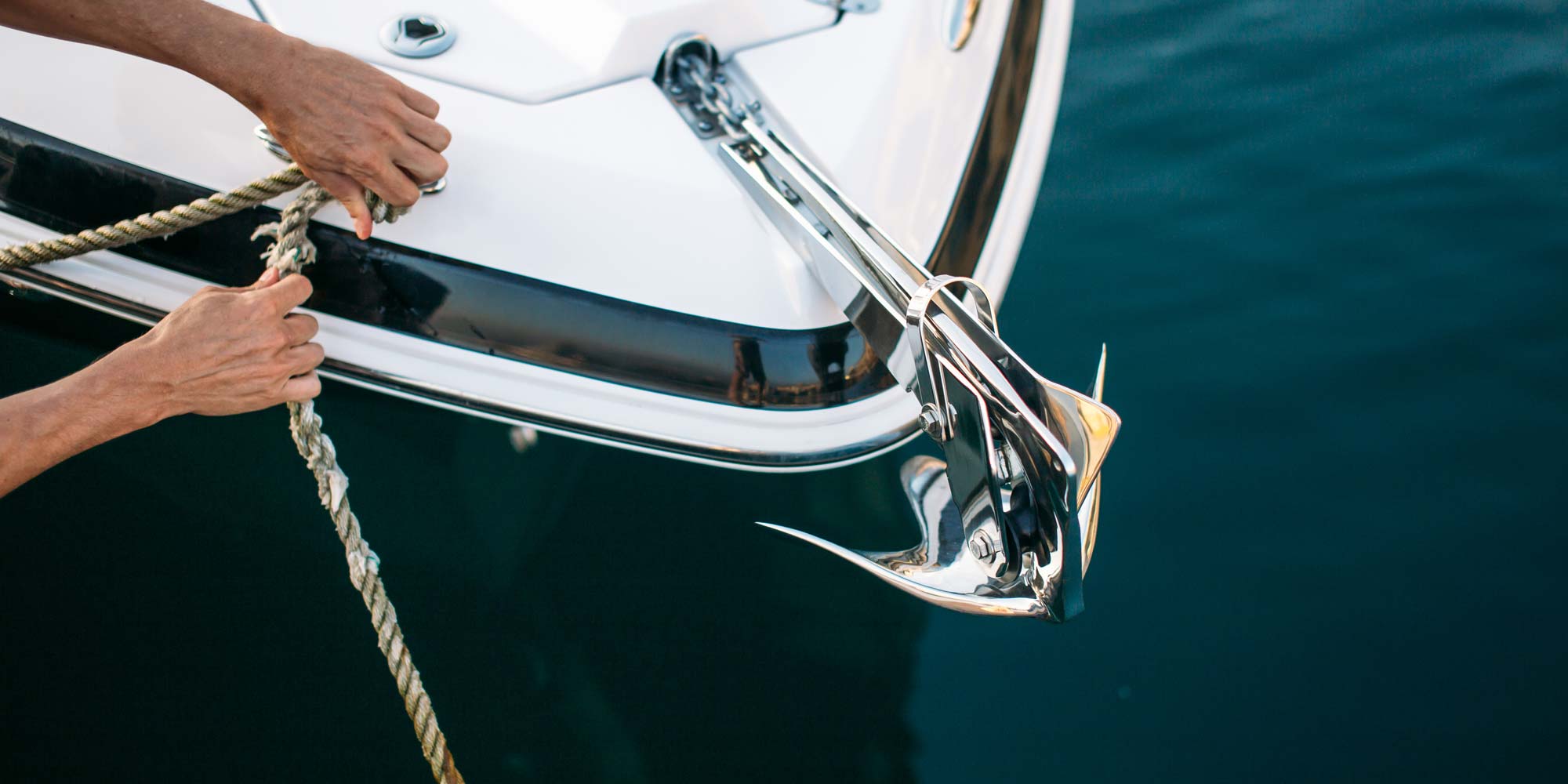Anchoring Techniques for the Active Boater

The subject of anchors and anchoring techniques generates passionate discussion. Here is what has worked best for us in thousands of miles and at countless anchorages, in almost every bottom type and sea condition.
Try and choose the best anchor for the bottom conditions you'll be in. Consider if you'll be protected from wind and seas. Rock or coral on the bottom with a light layer of sand will make it difficult to get a good anchor set. In very soft mud, the anchor may need to be allowed to settle for a period of time before you attempt to set it by backing down.
The rode is almost as important as the anchor itself. Use one that's either all chain or a combination of chain and line. For anchoring in rock or coral, all-chain is best, since line can easily chafe through quickly. A chain and line combination is the most common, but a sufficient amount of chain is essential for success.
Use a length of chain equal to the length of your boat, or longer. We carry 50 feet of chain plus 150 feet of line.
When you're getting ready to drop anchor, make note of the wind's direction and speed, and how the current is flowing. These all affect how the boat will lay on the anchor. Scout where you plan to drop the hook. Take note of other boats in the anchorage and look for a spot near boats like yours.

Powerboats, which are more affected by wind, will swing differently than sailboats, which are more likely to be affected by current. If wind and current are opposed, stop the boat and see how it will sit in those conditions. Consider the swinging room of your boat once the proper rode amount is deployed and determine whether you might swing where you shouldn't.
Once you've chosen your spot, come to a full stop drop and lower the anchor until it hits bottom. Our preferred scope in most conditions is 7 to 1 when using a chain and line combination. Fall back into neutral, and pay out the anchor rode as you go. Don't allow rode to pile on top of and foul the anchor.
Calculate the scope based on the depth of the water plus the distance from the anchor roller to the water. If the depth is 10 feet and the bow roller is 5 feet off the water, calculate scope based on 15 feet.
Once the desired scope is paid out, shift the boat into reverse at idle. Watch the anchor line as it gets tight and lay your hand on it. If it feels like it's skipping across the bottom, it's not yet set. The anchor could be fouled or you may not have enough scope out. If the boat stops in reverse idle, it's time to ease up on the throttle a bit.If set properly, the boat will stop and settle into one spot. Lining up objects ashore as a visual will tell you if you are set.
If the distance between them changes, you may be dragging. You may have to reset the anchor to get it right.

Ease back on the throttle slowly once you are set.
To raise anchor, drive forward slowly until the rode is retrieved. Do not use a power windlass to pull the boat up to the anchor. Once the bow of the boat is directly over the anchor, pulling straight up should break it loose. If not, drive the boat forward slowly to break it out, then it can be retrieved. Practice under calm conditions until you feel comfortable in your technique and have confidence in your ground tackle.
To know how much anchor rode is out, you can paint lines on the rode, but if you anchor a lot, the paint is gone in short order. Instead, use 1-inch strips of nylon webbing, sewn through the links in the chain or the twist in the lines, every 25 feet (1 at 25, 2 at 50 and so on). You can tell how much is out, even in the dark. You can also mark the rode with plastic wire ties, but these can break going through the windlass.
Susan Landry and Chuck Baier recently formed Beach House Publications and just released the first in a series that they authored, The Great Book of Anchorages: Hampton Roads/Norfolk to Key West. They have lived aboard and cruised extensively for more than 20 years. Their next book, about anchoring in the Bahamas, should be available later this year.

Anchoring tips:
- Cleat the anchor line to a strong point on the boat.
- Do not tangle body parts, fingers, or hair in the anchor line while deploying or retrieving the rode.Take extra care if you have an electric windlass.
- Have a good form of communication between the helmsperson and the person on the foredeck, such as two-way radio headsets.
- Check the tides to ensure that you won't be aground at low tide, and set your scope based on the high tide.
- Check your weather resources so you'll know what's coming.
- Don't let the chain and rode pile up on top of the anchor on the bottom.
- Don't anchor on top of other boatsgive everyone room.